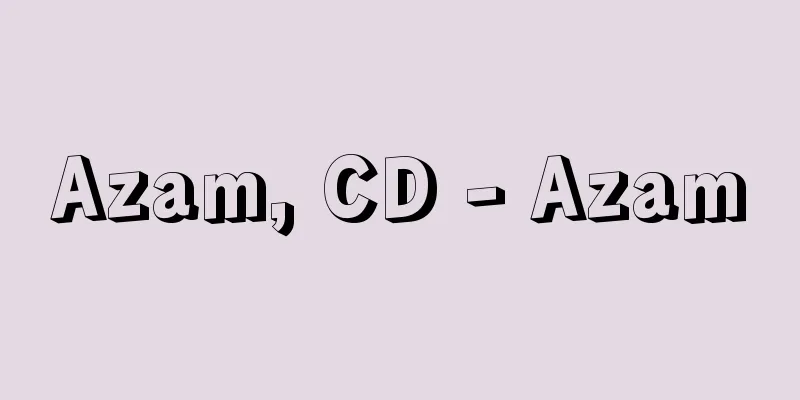Palmistry - tesogaku (English spelling)

|
A method of reading a person's character or predicting the future from the lines and flesh on their palms. It is also called chiromancy or chirosophy. Its origin is unknown, but one theory is that it started in ancient India and spread to various parts of the world. The traditional fortune-telling of the Roma (Gypsies) is also thought to have originated in India, where they originated. Palmistry was practiced in China, Tibet, Persia, Mesopotamia, and Egypt, and was greatly developed in ancient Greece. In the Middle Ages, pigmented spots were interpreted as a sign of a pact with the devil and were used in witch-hunting. It then declined for a time, but became popular again during the Renaissance, and in the 17th century, the basic principles of palmistry based on experience and theory were sought. During the Enlightenment (→ Enlightenment political thought) until the end of the 18th century, it went into a second decline, but in the 19th century it was revived by the activities of Casimir D'Alpentini, Louis Hamon (also known as Kilo), William Benham, and others. In the 20th century, palmistry attracted new attention and new interpretations from people such as the school of Carl Gustav Jung. Palmistry's claims that physical features on the hands have supernatural or prophetic meanings are not scientifically supported, but the hands of a person can reveal information about the person's health, cleanliness, professional habits, and neurotic tendencies (such as calluses and nail-biting marks). It is common for doctors to examine the hands during consultations, and palm readers often give surprising clues. (→ Fortune telling, fortune telling) Source: Encyclopaedia Britannica Concise Encyclopedia About Encyclopaedia Britannica Concise Encyclopedia Information |
|
人の手のひらに刻まれた線(→掌の襞)や肉づきから性格を読み解いたり,未来を占ったりする方法。手相占い chiromancy; chirosophyともいう。起源は不詳だが,一説には古代インドで始まり,世界各地に広まったとされる。ロマ(ジプシー。→ロム)の伝統的な占いも,彼らの起源であるインドに由来するとみられる。手相占いは中国やチベット,ペルシア,メソポタミア,エジプトで行なわれ,古代ギリシアで大きく発展した。中世には,色素斑は悪魔との契約のしるしと解釈され,魔女狩りに用いられた。その後,一時期衰退したが,ルネサンス期には再び盛んになり,17世紀には,経験と理論に基づく手相学の基本原理が模索された。18世紀末までの啓蒙主義の時代(→啓蒙政治思想)には 2度目の衰退期を迎えたが,19世紀にカジミール・ダルペンチーニやルイ・ハモン(別名キロ),ウィリアム・ベンハムらの活動により復活した。さらに 20世紀になると,カール・グスタフ・ユングの一派をはじめとする人々によって新たな注目を浴び,新しい解釈が加えられた。手に現れる身体的な特徴に超自然的で予言的な意味があるという手相学の主張に科学的な裏づけはないが,人間の手からはその人の健康状態や清潔さ,職業上の習慣や神経症的な癖(たこや爪をかんだ跡などはその一例)などがみてとれる。医者が診察の際に手を診ることはごく一般的であり,手相占い師が手から読み取った手がかりが,人を驚かせることもしばしばある。(→占い,運勢占い)
出典 ブリタニカ国際大百科事典 小項目事典ブリタニカ国際大百科事典 小項目事典について 情報 |
<<: Teso tribe (English spelling)
Recommend
Chugoku Mountains
A mountain range stretching from northwestern Hyo...
Juhachinarihama - Kugunarihama
...When you walk on this sand or poke it with a s...
van der Neer, A.
...Furthermore, the cutthroat free competition to...
Hazel grouse - Ezoraicho (English spelling)
It is a bird of the order Phasianidae, family Pha...
Iconography
Iconography (→ Buddhist iconography). Works of art...
《Smile-Cracking Pomegranate》 - Emily Pomegranate
...In this respect, it is not surprising that he ...
Ilex opaca (English spelling) Ilexopaca
…[Hiroshi Aramata]. … *Some of the terminology th...
Annaka uproar
...An uprising that broke out in the Annaka domai...
Olbers' paradox
A paradox that states that if the distribution of ...
Boiler - Boiler (English spelling)
A device that transfers the heat of combustion of...
Subboric acid
...The chemical formula is therefore written as N...
common vestry
…Parish administration was carried out by the par...
Wood moth - Cossus vicarius
An insect of the Cossidae family of the Lepidopter...
Carvaka (English spelling)
…This ideology that does not recognize the afterl...
Tanjakusui - Tanjakusui
A Chinese thinker in the mid-Ming dynasty. His pe...









